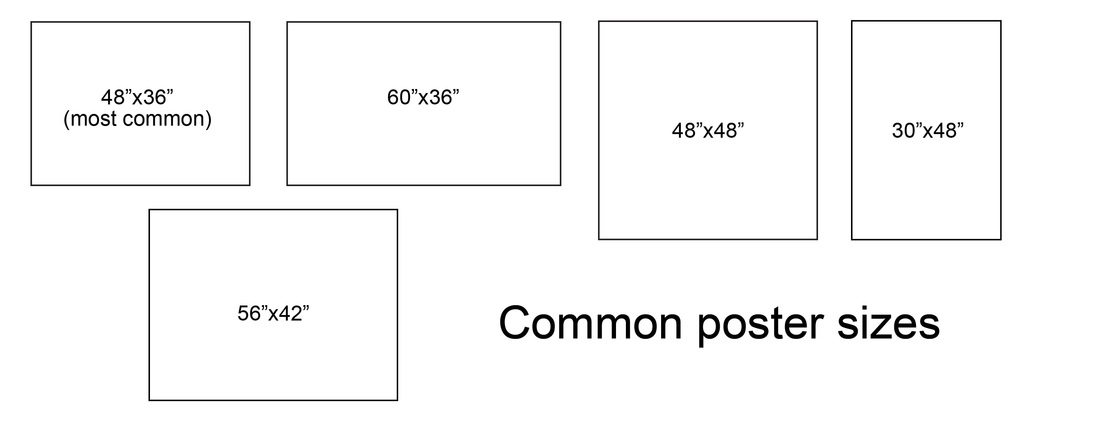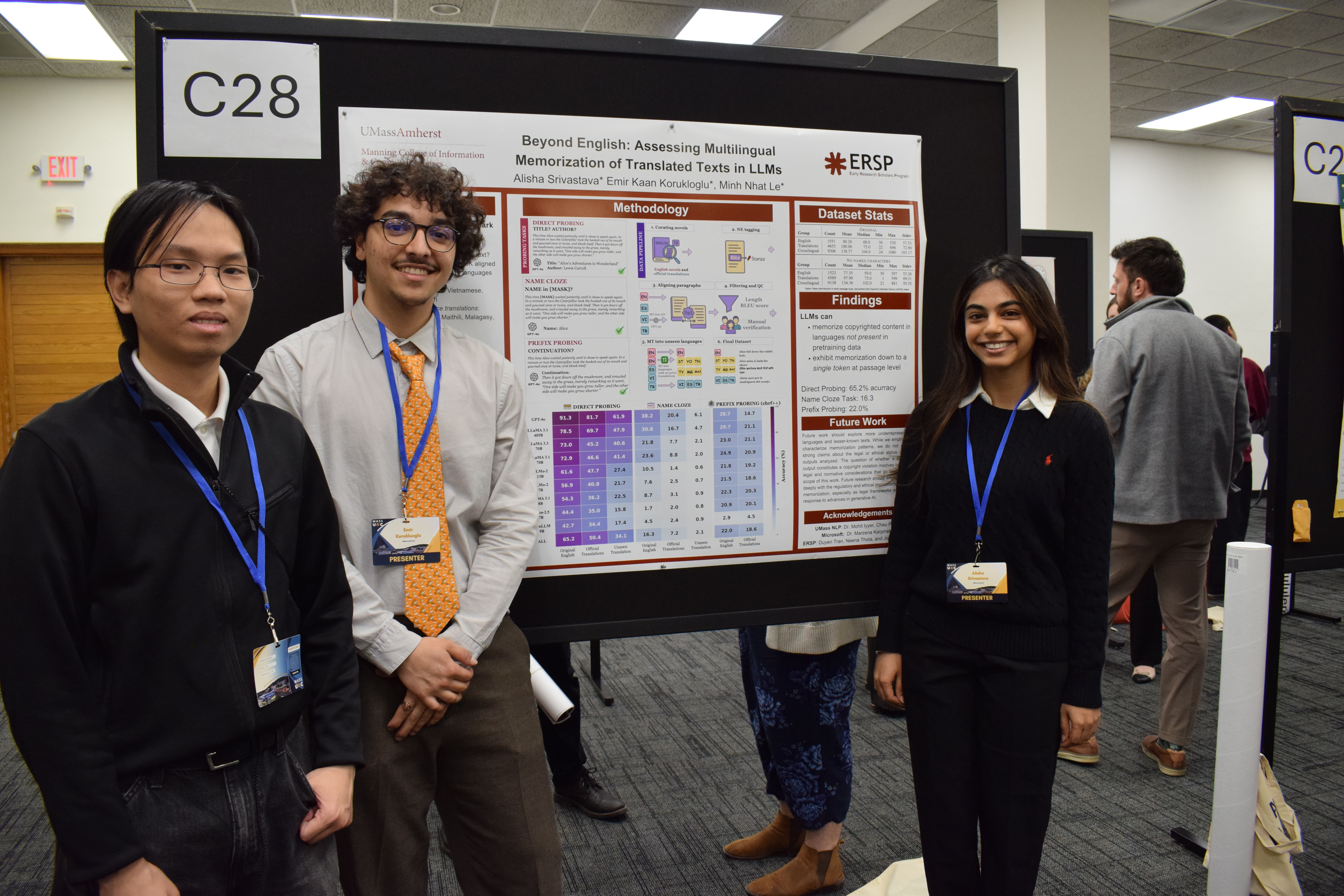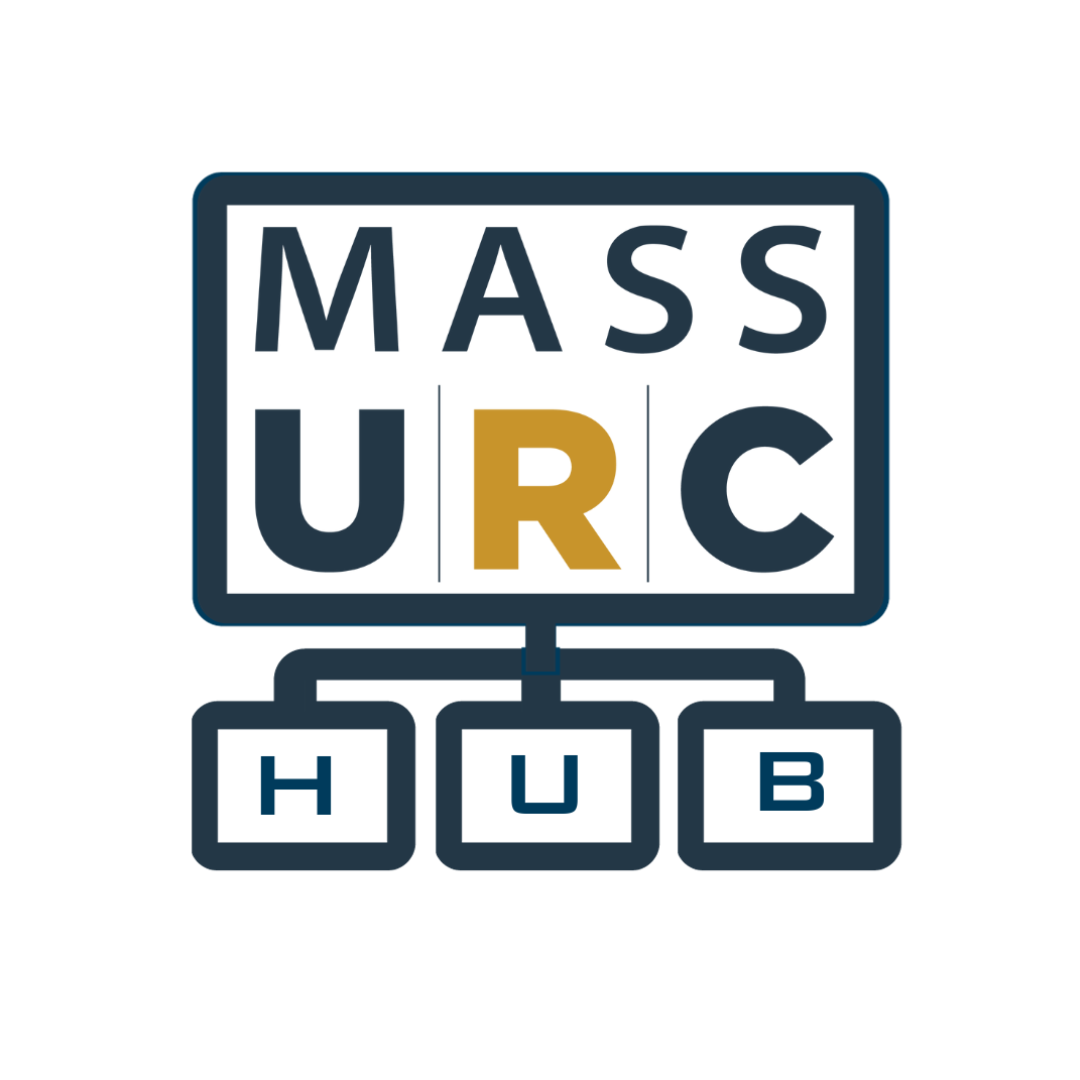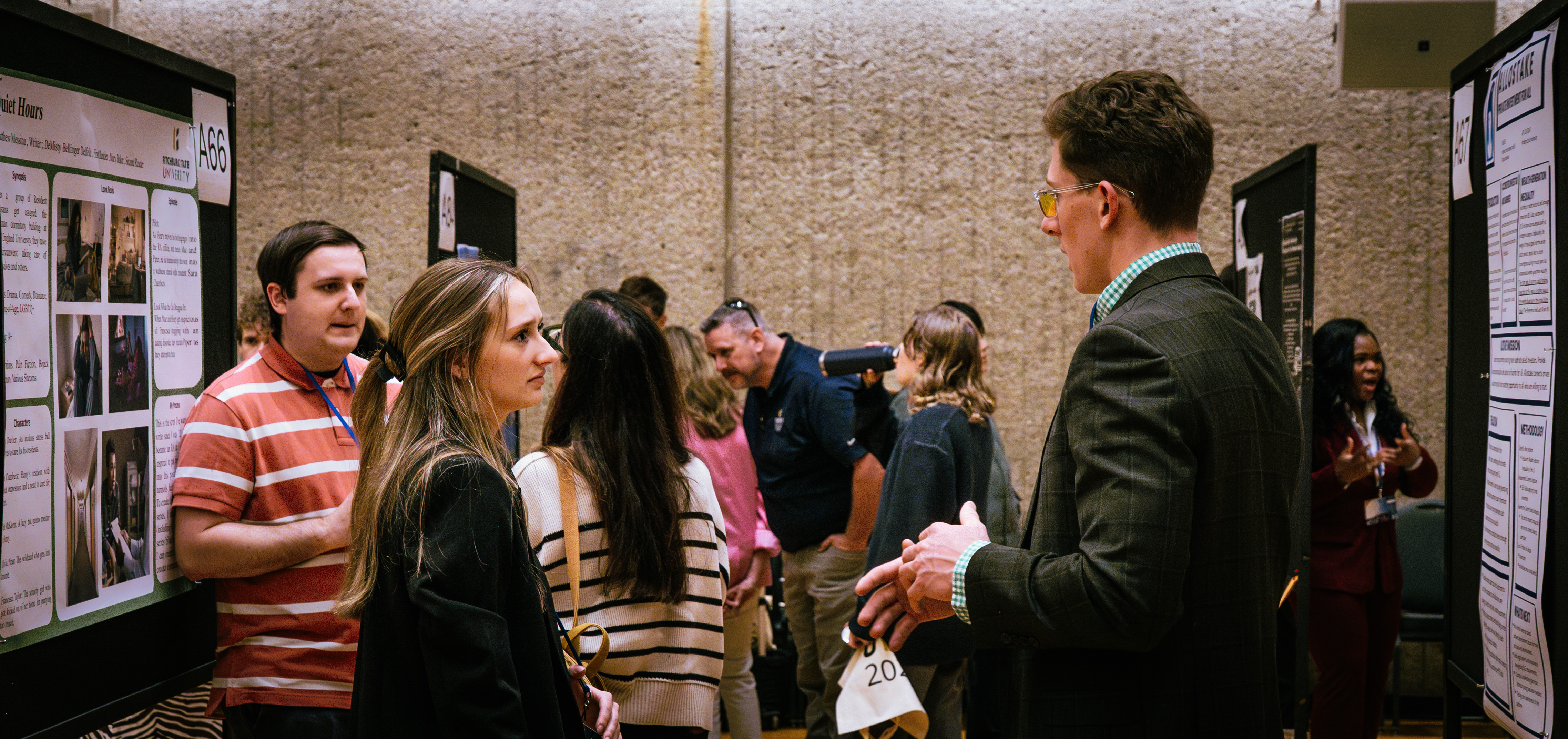CREATING YOUR POSTER
At the MassURC, the research poster will be the primary means for presenters to showcase their work. This dynamic format provides a platform for students to visually convey their research, facilitating a direct and engaging connection with their audience. Research posters are instrumental in encouraging in-depth discussions, offering immediate feedback, and providing a visual representation of findings, making them a highly effective mode of communicating ideas.
Poster Presentation Format
- Students will present their research on posters. MassURC does not provide funding for printing.
- MassURC organizers will provide 4’ x 6’ poster boards and pins for display.
- Every participating student must designate a Faculty Sponsor who will review and approve their research materials, including the abstract and poster presentation.
- Students have the option to present individually or in small groups.
- Students with ongoing research projects are strongly encouraged to submit abstracts and participate in this year’s MassURC.
- Example posters can be found here
- Here is a another resource on poster design for humanities students (nyu.edu): Poster Tips for Humanities Conference Posters.
Here is what the poster board provided looks like:

Poster Size
We don’t have a suggested size for the conference posters. Please refer to the image below for common poster sizes (taken from this excellent guide on academic poster design).

General Tips for Creating an Effective Research Poster
What is a Research Poster?
Research posters are a common feature in academic circles and are included in most conferences to summarize information or research succinctly and attractively, generating interest and discussion.
A typical poster combines concise text with tables, graphs, images, and various presentation formats. At a conference, the researcher stands by the poster display, allowing other participants to view the presentation and engage with the author.
What Makes a Good Poster?
- Ensure that crucial information is legible from approximately 10 feet away.
- Craft a title that is concise and attention-grabbing.
- Aim for a word count of around 300 to 800 words to keep the content succinct.
- Keep the text clear, straightforward, and employ formatting tools such as bullets, numbering, and headlines to enhance readability.
- Utilize graphics, color, and fonts effectively to engage the viewer.
- Maintain a consistent and tidy layout for visual appeal.
- Include acknowledgments, your name, and your institutional affiliation for context and recognition.
Guide for Making an Accessible Poster Presentation
Why is it important to consider accessibility when constructing my poster presentation?
When creating a poster for a research conference, prioritizing accessibility is important. Accessibility in the context of poster presentations refers to the deliberate effort to make your research comprehensible and inclusive to a diverse audience. It encompasses visual and verbal elements, aiming to remove barriers for individuals with varying abilities and needs.
While we recognize the challenges that may arise in implementing specific guidelines, we strongly recommend considering accessibility! Your goal is to ensure that your research reaches the widest possible audience, and incorporating accessibility from the start is a key step in achieving this.
Designing Your Research Poster: Ensuring Visual Clarity and Inclusivity
Your poster is a visual representation of your research, and making it accessible involves choosing design elements that are clear and easily understandable.
While there’s no one-size-fits-all solution, incorporating the following considerations during the construction of your presentation will enhance accessibility:
- Colors
- Ensure sufficient contrast between the text and the background using a tool such as Color Contrast Analyser or WebAIM Contrast Checker.
- Avoid relying solely on color to convey meaning. Instead, use patterns or shading in addition to color on charts, graphs, illustrations, and maps where color differences are intended to convey information.
-
Fonts
- Recommended: Sans-serif fonts such as Arial, Gill Sans, Helvetica, and Verdana for body and heading text
- Serif fonts such as Times New Roman and Garamond are recommended for headings only
- Text size: bigger is better!
- Main title: 72 point (minimum) - 158 point (ideal)
- Section headings: 42 point (minimum) - 56 point (ideal)
- Body text: 24 point (minimum) - 36 point (ideal)
- Captions: 18 point (minimum) - 24 point (ideal)
- Additional Tools
- Guidelines for Creating Accessible Printed Posters
More detailed guidelines for creating the most accessible poster presentations possible - Coloring for Colorblindness (David Nichols)
A great place to start your reading if you’re not sure what color choices on a poster have to do with accessibility. - Color Contrast Analyser
Downloadable application that helps you determine the legibility of text and the contrast of visual elements, such as graphical controls and visual indicators. - WebAIM Contrast Checker
Another free online tool that can help you ensure that text will be readable.
- Guidelines for Creating Accessible Printed Posters
If your poster will be available in a digital format as a PowerPoint slide or PDF, review these tips and tricks about how to ensure that your poster is accessible to all members of your audience.
Conference Day Tips: Ensuring Inclusive Verbal Communication
On the day of the conference, you’ll be walking attendees through your research verbally. By considering accessibility, you guarantee that your spoken explanations are inclusive and contribute to a clear and coherent understanding of your work for everyone in the audience.
Ensure that your verbal presentation aligns with accessibility principles:
- Clarity: Speak clearly and at a moderate pace to aid understanding for all attendees.
- Inclusive Language: Use language that is inclusive and avoids jargon, making your research accessible to a diverse audience.
- Descriptions of Visuals: Provide detailed descriptions verbally for any visuals you may have included to assist those with visual impairments.
By integrating these considerations into your poster design and verbal presentation, you contribute to a more inclusive academic environment where everyone can engage with and appreciate your research!
Examples of MassURC Posters from Previous Years
Here are some sample posters previously presented at MassURC:





